What Is A "Learning Center" & What Does It Look Like? (Incl. Examples)
Do you remember that really helpful blog article you wrote about 12-18 months ago? Yes, the one you poured your heart and soul into to answer a customer's question. Can you find that for me real quick on your blog?
If you are publishing content every week, you will have a hard time finding it unless you know exactly the title of it and can search for it. But imagine you are a buyer looking to educate themselves. For example, one of my clients has 400+ blogs and 125 landing pages. The only way they would find it is a) by typing a relevant keyword into Google (but you have to rank high for that keyword) or b) by accident, e.g., a recommended post after reading another article.

You need your website visitors to be able to easily and intuitively navigate your educational resources so they can learn as much as they need to make the right purchase decision for themselves.
But your blog has become anything but easy and intuitive to navigate. It feels more and more like a black hole that sucks in all of your great content, never to be seen again. At 3P Creative Group, we show all of our clients how to set up a so-called "Learning Center."
In this article, I will show you why you need a learning center on your website, how you can set one up, and even show some examples of what good looks like.
What Is A Website's "Learning Center"?
Impact, a top digital marketing and sales training firm and the birthplace of They Ask You Answer by Marcus Sheridan, defines a learning center as follows:
"A learning center is a hub for all of your website’s most important content. It's where your visitors or customers go to find answers to their specific problems, or to find information on something that they're interested in learning more about."
I would add to that definition that you are proactively building this according to their customer journey and interests to create a structure that will allow them to find what they need to find.
"A website's Learning Center refers to a central repository of your website's most valuable educational resources. This is where you strategically curate the most helpful articles, videos, infographics, tools, and other resources grouped by steps in your buyer's customer journey and their interests with the goal to proactively increase the chances that your buyers will find answers to their questions or learn something new."
In other words, it is the best way to organize all of your educational resources so buyers can find them.
Why A Learning Center Is Crucial On Your Website
Think about it: Let's say you are looking to build a passive house. You have done a bunch of research, but you are concerned about potential mold problems.
You search for answers and you land on an article called "Does Passive House Design Increase The Potential For Mold? which is a common fear amongst potential builders.
After you have read the article, you discover that, in fact, a house that was designed for Passive House standards but was built making sacrifices (not certified) could have mold buildup due to air leakages and uncontrolled moisture.
.png?width=800&height=200&name=Learning%20Center%20(1).png)
What now? If this is where you would leave the website, you might consider giving up on a passive house design project altogether.
But you only got half of the story!
Imagine you read next an article called "How Correct Passive House Design & Construction Eliminates Mold Potential & Creates Healthy Indoor Climate." It explains how a correctly designed Passive House with a proper mechanical ventilation system providing continual aeration, good thermal protection, and a thermal bridge-free structure, creates such healthy indoor air that people with asthma and eczema often see an improvement in symptoms within just weeks.
Okay, that makes you feel better! But how do you get there? How can you be sure? That's where the Passive House Certification comes in which ensures that the three hallmarks of Passive House Design are met. You might read an article called "Why is it important to certify a passive house building?" next.
See what is happening here?
- With each piece of content, you are one step further toward having all the information you need to confidently decide.
- You can discover this information by yourself in a learning center without the help of a salesperson.
- You are starting to trust the company that is taking the time to explain this to you honestly and transparently.
And that's why you need a learning center.
How Do You Build A Learning Center For Your Website?
At this point, I hope you see the benefits to adding a learning center to your website and you are asking yourself: How do I do it?
I recommend taking these five steps:
1. Consult your buyer personas and customer journey maps
Creating a learning center on your website that is truly helpful requires an understanding of your buyer personas and customer journey maps.
- Knowing your buyer personas allows you to understand their problems, worries, and needs and to include content that is helpful and relevant to them.
- Knowing their customer journey maps allows you to identify the decision points and provide them with helpful content that is tailored to their needs at each stage of their buying journey.
2. Audit your content to identify your most valuable assets
Look through all of your existing articles, videos, buyer’s guides, ebooks, whitepapers, quizzes, ROI calculators, infographics, podcasts, and anything else you might have and identify those assets that are so valuable that they need to be included in the learning center.
A word of caution: WE tend to value the content we put a lot of time, money, and energy into. But you need to look for content that truly helps your buyers: start by looking at your content pieces that already contribute to your revenue. Which assets are sales using? Which articles and videos get a lot of views and a high view/read time? Also, make note of any gaps you identify. Those should be added to your content calendar as soon as possible.
3. Decide on the right filters
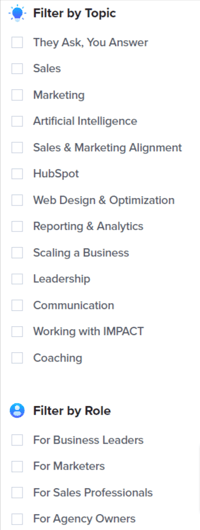 Now that you know what your website visitors need to find and what you have to offer them, you will need to determine the filters you will offer so they can find your content:
Now that you know what your website visitors need to find and what you have to offer them, you will need to determine the filters you will offer so they can find your content:
- By role (architect, contractor, residential builder, ...)
- By goal (scaling a business, sales & marketing alignment, ...)
- By stage of the buyer's journey (in planning, purchased land, ready to build, ...)
- By content type (article, video, podcast, ...)
Be careful to define these from your buyer's point of view: put yourself in their shoes and try to anticipate what they need to find answers to their questions.
4. Build your learning center and add it to your top navigation
Now to the fun part: building your learning center. Create a page that lets you add a lot of resources without getting lost. Some They Ask You Answer learning centers have 100-150 pieces of content in theirs. This requires an excellent page layout and the ability to create granular filters.
5. Continue to expand and optimize it
Just as your blog is never done, your learning center is never done. As you create educational resources from now on, debate within your (revenue) team if this is worthy of making it into the learning center.
Similarly, you want to become ruthless about kicking out what doesn't contribute. Deploy heat map analytics tools, like Hotjar, to determine which filters and content get the most attention and which aren't pulling their weight. Optimize it on a regular basis.
Alright, now that you know the steps, let's have a look at a few examples of what great looks like.
Examples of Great Learning Centers To Inspire You
Below, I will share with you three learning centers that are really doing a phenomenal job.
1. Berry Insurance Learning Center
One of my favorite learning centers is the one by Berry Insurance. That's not only because of their engaging hero video (go watch it and you know what I mean) or because of Shredder, the Berry Insurance Chief Barking Officer, but because they have 120+ educational resources you can discover easily and intuitively.
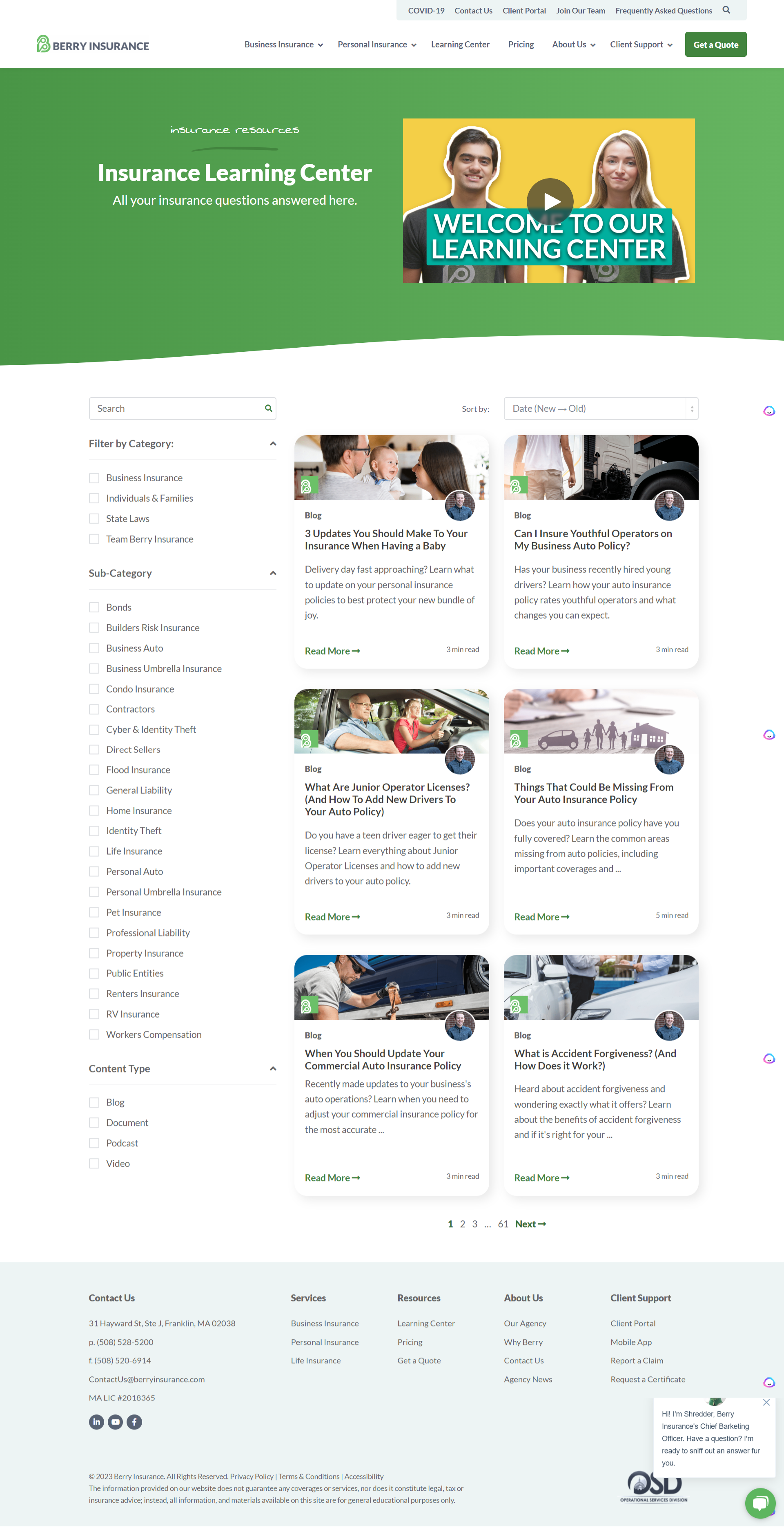
2. AES Learning Center
Next up is AES Learning Center. Believe it or not, it houses close to 650 resources for a wide variety of teachers and school admin staff. I love the topics (e.g., they are addressing and the wide variety of resource formats (e.g., lesson plans, posters, and how-tos).
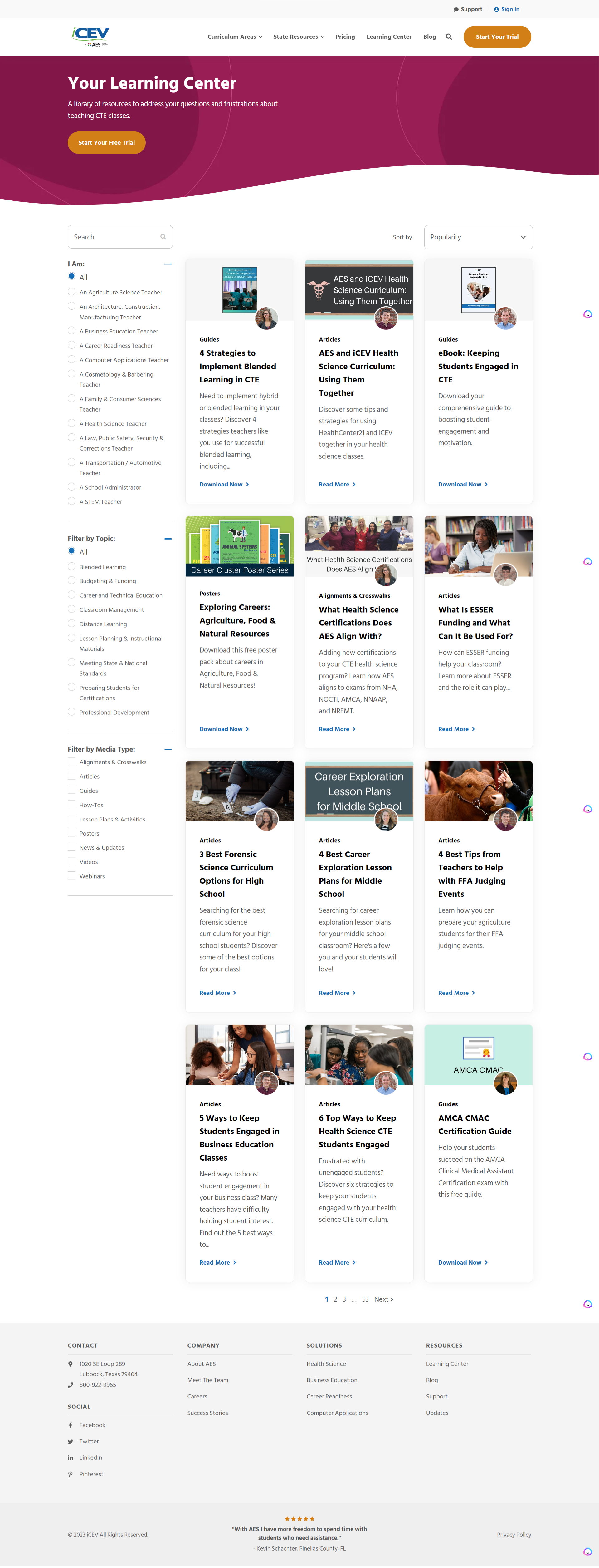
3. Roofcrafter's Learning Center
Last, but not least, let's have a look at the learning center of Roofcrafters. I expanded the filters so you can see what is hiding behind the drop-down menu. Notice how they categorized their content by residential vs. commercial first and then break it down into roofing services, roof repair, roof leaks, etc. before offering a filter for different content types.
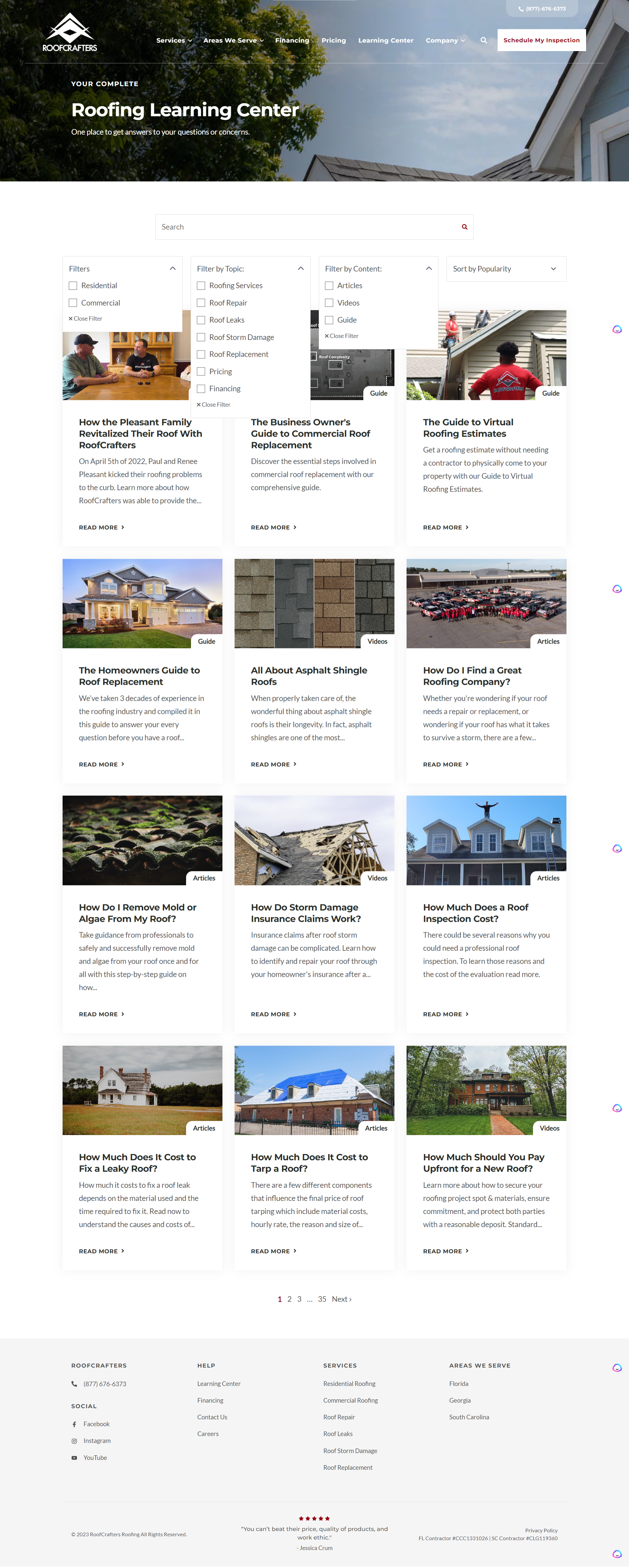
Conclusion
In conclusion, creating and maintaining a learning center on your website is crucial for educating your customers and helping them make informed decisions. By organizing your educational resources in a central hub, you make it easier for visitors to find the information they need.
The five steps to building a learning center (consulting your buyer personas, auditing your content, deciding on filters, building the center, and expanding and optimizing it), provide a roadmap for success.
By implementing a learning center, you help empower your customers and establish trust by providing valuable and transparent information. It's time to take the next step and create a learning center that will greatly enhance your customers' experience and drive your business forward. If you want to learn more about how a learning center fits into a well-rounded content strategy, I strongly encourage you to reach out and speak with an advisor.
Share this
You May Also Like
These Related Stories

Inbound Marketing vs. They Ask, You Answer: What Is Better?

What To Do Month-By-Month When Implementing They Ask, You Answer

.png?width=250&height=125&name=TrustBuilderLogoWhiteTranspBackgr(250x125%20px).png)

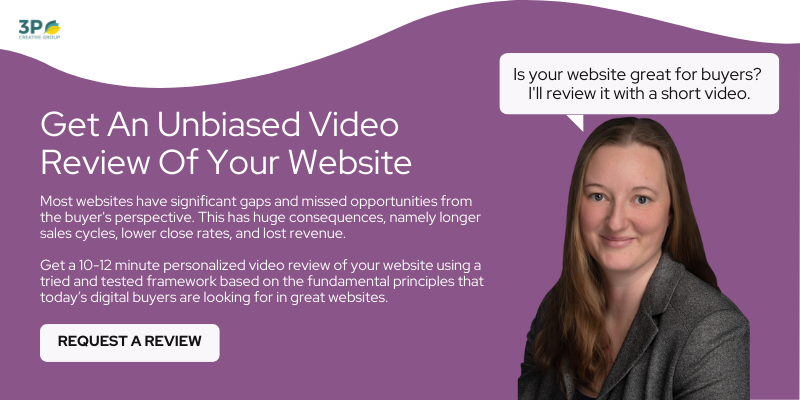
No Comments Yet
Let us know what you think